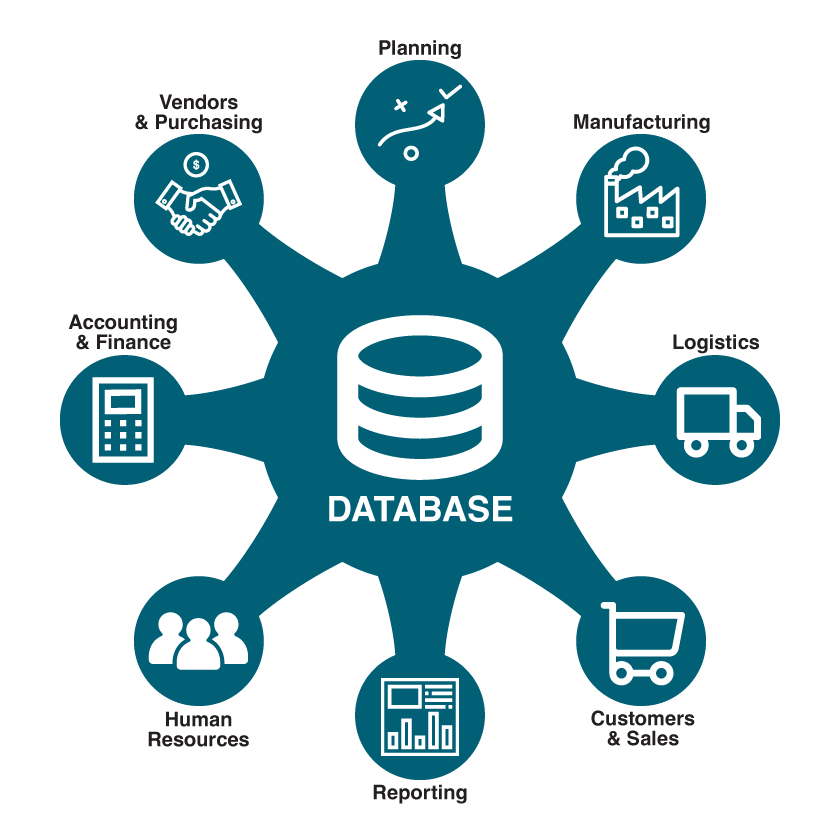4.4. Desktop and Enterprise Software
Desktop software refers to applications installed on a personal computer—your browser, your Office suite, photo editors, and computer games are all desktop software. Enterprise software refers to applications that address the needs of multiple, simultaneous users in an organization or work group. Most companies run various forms of enterprise software programs to keep track of their inventory, record sales, manage payments to suppliers, cut employee paychecks, and handle other functions.
Some firms write their own enterprise software from scratch, but this can be time consuming and costly. Since many firms have similar procedures for accounting, finance, inventory management, and human resource functions, it often makes sense to buy a software package (a software product offered commercially by a third party) to support some of these functions. Enterprise resource planning (ERP) software packages serve precisely this purpose. In the way that Microsoft can sell you a suite of desktop software programs that work together, many companies sell ERP software that coordinates and integrates many of the functions of a business.
The leading ERP vendors include the firm’s SAP and Oracle, although there are many firms that sell ERP software. A company does not have to install all of the modules of an ERP suite, but it might add functions over time—for example, to plug in an accounting program that is able to read data from the firm’s previously installed inventory management system. And although a bit more of a challenge to integrate, a firm can also mix and match components, linking software the firm has written with modules purchased from different enterprise software vendors. We will discuss enterprise software in more detail in chapter 11 and decision support software in chapter 12.

Most enterprise software works in conjunction with a database management system (DBMS). The database management system stores and retrieves the data that an application creates and uses. Although the DBMS is itself considered an application, it’s often useful to think of a firm’s database systems as sitting above the operating system, but under the enterprise applications. Many ERP systems and enterprise software programs are configured to share the same database system so that an organization’s different programs can use a common, shared set of data. This system can be hugely valuable for a company’s efficiency. We will discuss databases and DBMS’s in chapter 5.
“9.3 Application Software” from Information Systems Copyright © 2015 by University of Minnesota is licensed under a Creative Commons Attribution-NonCommercial-ShareAlike 4.0 International License, except where otherwise noted.

